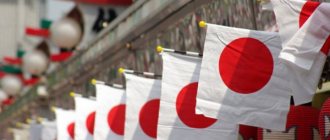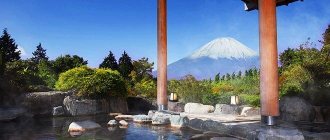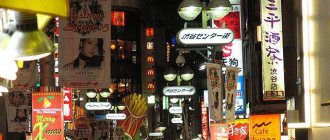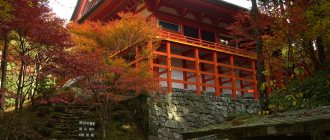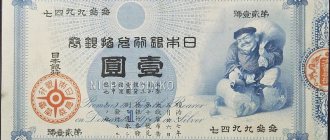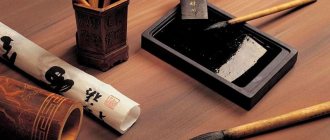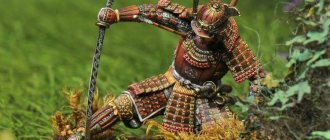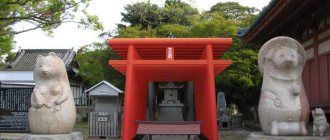Japan
Kanamara Matsuri: vivid photos and videos, detailed description and reviews of the Kanamara Matsuri event in 2021.
- Last minute tours
around the world
Kanamari Matsuri is a surprisingly obscene holiday, especially for Japan, from which no one expects such behavior. This is the festival of iron penises, during which the corresponding symbols fill the city of Kawasaki, processions with huge phalluses take place, everyone wishes each other success in their sexual life and health associated with it. The Japanese have a great respect for nature and fertility. They believe that every year God meets with the Goddess so that life on Earth will not be interrupted, which is why it is so important to praise God's penis.
Story
The history of Kanamara Matsuri is closely connected with representatives of the oldest profession - about half a century ago in Kawasaki they sponsored the construction of a temple, the monks of which were supposed to regularly ask the gods to protect girls from venereal diseases. By the 20th century, the prayers had evolved into an annual week-long celebration dedicated to health and fertility in general.
Why iron penises? There is a story here, or rather, a legend about a Japanese girl who is inhabited by a toothy demon. He bit off the penises of suitors on their wedding night, and after two losses, she turned to a blacksmith, who forged her an iron penis. The deceived demon sank his teeth into the fake, broke them and abandoned the bride.
The holiday is celebrated on the first Sunday of April, starting in 1603. True, there was a long break since 1868, it was considered too indecent and they tried to replace it with a calmer day of fertility. The festival resumed less than 10 years ago with the active participation of the HIV Society.
Matsuri from Hidden Sand Village
┌┈✷◎்۫۫✵┈┈❃۬◦۪۪̥┄┐
Hi all.
Korra here.
Today we will talk about a character from the Hidden Sand - Matsuri.
└┄❃۬◦۪۪̥┈┈✷◎்۫۫✵┈┘
Matsuri is a genin from the Hidden Sand Village. Gaara's first student. Her team includes Yukatoi and Mikoshi.
Appearance.
Matsuri has straight, chin-length brown hair, dark eyes, and fair skin. In the first part, she wore a blue and green blouse that hung over her left shoulder. Underneath is a white and pink sleeveless T-shirt, a short yellow scarf tied around her neck, and a black short skirt. She also wore thigh-high stockings, brown sandals, and black gloves with gray elbow-length guards on her right arm. During the Chūnin Exams, she wore two pairs of face guards instead of one, a dark pink blouse with slits at the shoulders, a white blouse underneath, and a black forehead protector in place of a scarf. In the second part, she wears a dark blouse with a skirt of the same color and a Hidden Sand vest.
Personality.
Matsuri was originally shy and quiet. Under Gaara's tutelage, she becomes braver and more open. Although at first Matsuri was reluctant to use weapons, she became less constrained after training with Gaara; she will use weapons to protect her comrades and the people of Hidden Sand and will never harm them. Despite her kindness, she can also be aggressive. This is proven by the fact that she escalated the fighting during the chunin exam.
Matsuri is one of those who admire Gaara. In the Fourth Shinobi World War, her admiration extends to Naruto Uzumaki. But Gaara continues to be her favorite. She is constantly offended when Gaara is criticized and comes to the point that she often disobeys orders.
Childhood.
Matsuri witnessed the murder of her parents at an early age. This was reflected in the future when she was unable to choose a weapon to fight with. She also does not like cruelty towards people.
Rescue Matsuri.
People from the Takumi village announced to Gaara that if he himself did not come to them, then every day they would kidnap his dear people. Matsuri was the first victim. They noticed her when she was training with Gaara. They kidnapped her when she was alone without Gaara. Kanoha joined in rescuing Matsuri. As a result, Naruto saved her. He also bravely enters into battle with the warog, after the words spoken by Naruto. At the end of the mission, she asks Shikamaru to thank Naruto. After this they return back to the village.
Kidnapping Gaara.
When Akatsuki kidnapped Gaara, Matsuri was one of those who went looking for him. She was part of Temari's team whose task was to guard the borders. Matsuri complains that they should look for Gaara instead. Matsuri denies Ittetsu when he suggests that Gaara has died. She and Sari then run up to Gaara to offer their help, but are stopped by Temari.
Fourth Shinobi World War.
Matsuri and Yukata participated in the Fourth Shinobi World War, they were in the fourth division. They really liked the speech Gaara gave before the United Forces went into battle. When the fight broke out, Matsuri and Yukata went to the Wind Release team to subdue the Third Raikage. Matsuri and Yukata begin to discuss Naruto Uzumaki, so Temari orders them to keep their distance in order to stop listening to them. After defeating the Raikage, Matsuri and Yukata gossiped about Daimaru's declarations of love for Temari, and then teased her for Shikamaru.
Daimaru Meets Temari and Declares His Love for Her - Funny Moments (Movie TV)
Data
- The name Matsuri has the meaning of festival, as well as Arabian jasmine.
- A kunoichi similar to Matsuri appeared in Naruto Shippūden: Ultimate Ninja 4. In it, she walked near the save point outside of the Sand, although her skirt was red.
— Although Matsuri appeared in the manga only after the time skip, in the anime she was introduced before it.
#ProjectA
#ToSelection
How is the holiday going?
The holiday lasts a whole week, with the main events taking place on the final Sunday. From early morning, a totem is installed in the temple, which must be touched for intimate health. This is a huge pink penis 2.5 m high. It is he who becomes the main figure of the procession through the streets of the city to music and drumming. It is traditionally carried by transvestites on a special stretcher. This is not the only phallus; it is followed by a stretcher with smaller black and flesh-colored totems. Participants in the procession are usually dressed in national costumes.
Not only Kanamara Matsuri is associated with the phallus. In mid-March, they also celebrate Honen Matsuri, a fertility day, for which every year a penis is whittled out of a whole cypress tree trunk.
The procession is the only tradition of the festival; otherwise, it has no rules. Guests simply have fun, feast on candies in the shape of festival symbols, buy numerous souvenirs and, of course, touch the ritual iron phalluses found everywhere, bringing protection from sexually transmitted diseases and success in sexual life. Nowhere in the world are there so many erotic souvenirs of all types, sizes, colors and the most unexpected purposes. For a modest fee you can purchase themed salt and pepper shakers, soap, cups, bookends, ashtrays, candlesticks, souvenir keychains, lighters, and balloons.
All funds raised at the festival are donated to the AIDS Foundation.
Great Matsuri Festival in Japan
Content
Great Matsuri holiday in Japan. Japanese holidays and festivals that are held these days tend to have a lot of history. These holidays are now for the Japanese, on the one hand, a reason for fun and relaxation, and on the other, they force them not to forget what was a reality for their fathers and grandfathers yesterday, and is now gradually fading into history.
Great holiday - matsuri in Japan
The Japanese not only love holidays, but also know how to organize them and have a lot of fun. No country in the world can compare with Japan in the number of public holidays per year: there are 15 of them in Japan.
And traditional holidays and festivals simply cannot be counted.
Any holiday in Japan is called "matsuri"
Great Matsuri Festival in Japan
Each prefecture, each city has its own traditional holidays, unique only to this area and a certain time of year.
Great Matsuri Festival in Japan
There are also festivals - “matsuri” , which are celebrated on a grand scale throughout the country.
There are holidays that have their roots in Japanese Buddhism or in the tradition of Shinto, the national religion.
In addition, there are festivals, the holding of which has become a tradition relatively recently. For example, Sapporo Snow Festival
Snow Festival in Sapporo
or Valentine's Day.
Valentine's Day
Great Matsuri Festival in Japan
At European carnivals it is customary to wear masks. In Japan, theatrical performances are designed to protect people from evil spirits.
Eg,
- "Gaga-ku" is a procession of dancers accompanied by loud music.
“Gaga-ku” is a procession of dancers accompanied by loud music.
One of the actors is dressed in a lion costume.
- In the "bugaku" , the participants wear bright costumes and beat a huge drum.
bugaku
- In addition to these theatrical performances, “mikoshi” .
“Mikoshi” is the name given to the altars that are customarily carried in the hands during festive processions.
Mikoshi
The Japanese believe that the spirit of a deity can move into altars. Outside the walls of the sanctuary, this spirit is worshiped by everyone.
To create "mikoshi" they use bamboo and paper, and decorate them with bells and silk ribbons.
Mikoshi
The festive procession also uses “dashi” platforms with figurines of animals and Japanese historical heroes placed on them. Such platforms, despite the fact that they are very heavy, are pulled by people by hand. Altars and platforms can be used in processions for many years.
Between holidays, they are dismantled and given to churches for preservation. For Japanese men, it is a great honor that they will pull the platform, or carry the altar.
Those myths that became the reasons for the rituals are of little interest to anyone today. Many are more interested in the price or age of the altar than in the holiday itself. Despite this, the ritual of the holiday is always observed.
For the participants, this is not only a reason for fun.
At such times, residents actively communicate with each other and work together to decorate the temple. They set up a small market near the temple where they sell fried noodles and special pancakes. On public holidays, the Japanese like to dress up in kimonos, as well as ancient national costumes.
Setsubun is celebrated in February, when winter gradually turns into spring. Residents perform special rituals on this holiday to ensure that evil spirits move away from their homes. One of these rituals includes scattering beans after the service.
When the Day of the Dead , called O-bon , is celebrated, the Japanese visit the homes of their deceased relatives and bless their souls.
O-bon
They lower lit lanterns into the water, and farewell bonfires are lit near the temples.
Part I[edit]
Ultimate weapon[edit]
When people from the Takumi village announced that they intended to get Gaara and until he came to them himself, they would kidnap one person dear to him every day. Noticing Matsuri next to Gaara, they decided that she would be the first victim and kidnapped her when Gaara was not around. Having learned about this, Gaara and his team immediately went to save her. A little later, Konoha joined them to help, Matsuri freed Naruto from “wooden captivity” while Gaara fought with the main enemy. After the enemy was defeated, Matsuri and the others returned with everyone to Konoha. When Gaara was discharged from the hospital there, Matsuri and the team from Sand were about to go home, but right before leaving she asked Shikamaru to convey her gratitude to Naruto.
Yakuza holiday (9 photos + 1 video)
Author: japanican
17 October 2014 14:30
Tags: okinawajapan.ru Japan Asakusa tattoos Yakuza Tokyo Asakusa tours in Tokyo Yakuza Japanese mafia Yakuza Japanese holidays
4686
9
1
Sanja Matsuri is the favorite holiday of all the yakuza in Japan. For the first 2 days they modestly cover up their tattoos and take part in the festive procession, but on the third (last) day they shed their costumes and get ready to have real fun. The center of the celebration is Asakusa Jinja. Competing mafia teams must carry 2 giant mikoshi through the temple grounds.
0
See all photos in the gallery
For this purpose, the site is fenced off, and around it is a human barrier of more than 500 police officers in white uniforms.
0
During the Edo era, criminals were branded on their cheek or forehead to mark them for life. Once the Yakuza came to power, punishment was turned into a symbol that was worn with pride, and tattooing became an art. A continuous beautiful pattern is usually located on the shoulders and back. The paintings are painted with such skill that when a person tenses his muscles, they seem to come to life. And such a tattoo is not cheap - the most complex ones reach up to $15,000 and require hundreds of hours of painful application without anesthesia. It often happens that a particularly beautiful pattern is placed in a frame after its owner no longer has any use for it.
0
MIKOSI
0
The Yakuza is a recognized element of society. Many corporations hire them to manage shareholder meetings: they pay uncooperative shareholders a visit, and then there are no unexpected difficulties when voting. The Yakuza also take an active part in festivals and community affairs.
0
It happens that the government even encourages such participation, hoping thereby to introduce the yakuza to the mainstream of the Japanese and thus pacify them or somehow influence them.
0
Instead of throwing themselves at each other, the battle between the two yakuza clans is conducted indirectly - through the mikoshi, to whom everyone's attention is drawn. These altars weigh so much that even a team of 50 people can only carry them for a few minutes. Whose team drops first will become the object of ridicule, so both try hard to hold on to their mikoshi, and, if possible, start swinging them so that the bells ring on them. A whirlpool of half-naked yakuza forms around the mikoshi, overwhelming everything in its path. There are several people standing at the top of each mikoshi. They guide the bearers with gilded fans. One of the participants in the procession apparently remembers that he has unfinished business in the crowd, and immediately rushes down from the platform. The pushing and kicking does not stop for 3 hours; 10,000 angry yakuza unleash their fury in a symbolic battle between two giant mikoshi who slowly move through the temple grounds.
0
Sanja Matsuri is a religious festival dedicated to the kami of two fishermen brothers who found a figurine of the Bodhisattva Kannon in nets pulled out of the Sumidagawa River on May 17, 628, as well as the wealthy landowner Hajino Nakatomo, who, having learned about the fishermen, converted them to Buddhism. All three then dedicated their lives to Buddhism, and the statue was placed in the small Sensoji Temple. The figurine is still there today - now it is the oldest temple in Tokyo.
0
0
Source:
Related links:
- Lamborghini Diablo Shinichi Morohoshi
- Japan: lost in translation
- Japanese inventions: brilliant and crazy
- How much do groceries cost in Japan? Rolls, beer and meat
- Japanese Yakuza
Tags: okinawajapan.ru Japan Asakusa tattoos Yakuza Tokyo Asakusa tours in Tokyo Yakuza Japanese mafia Yakuza Japanese holidays
Did you like the post? Support Chips, click:
27 5 22
Liked
22 1
8
Partner news

